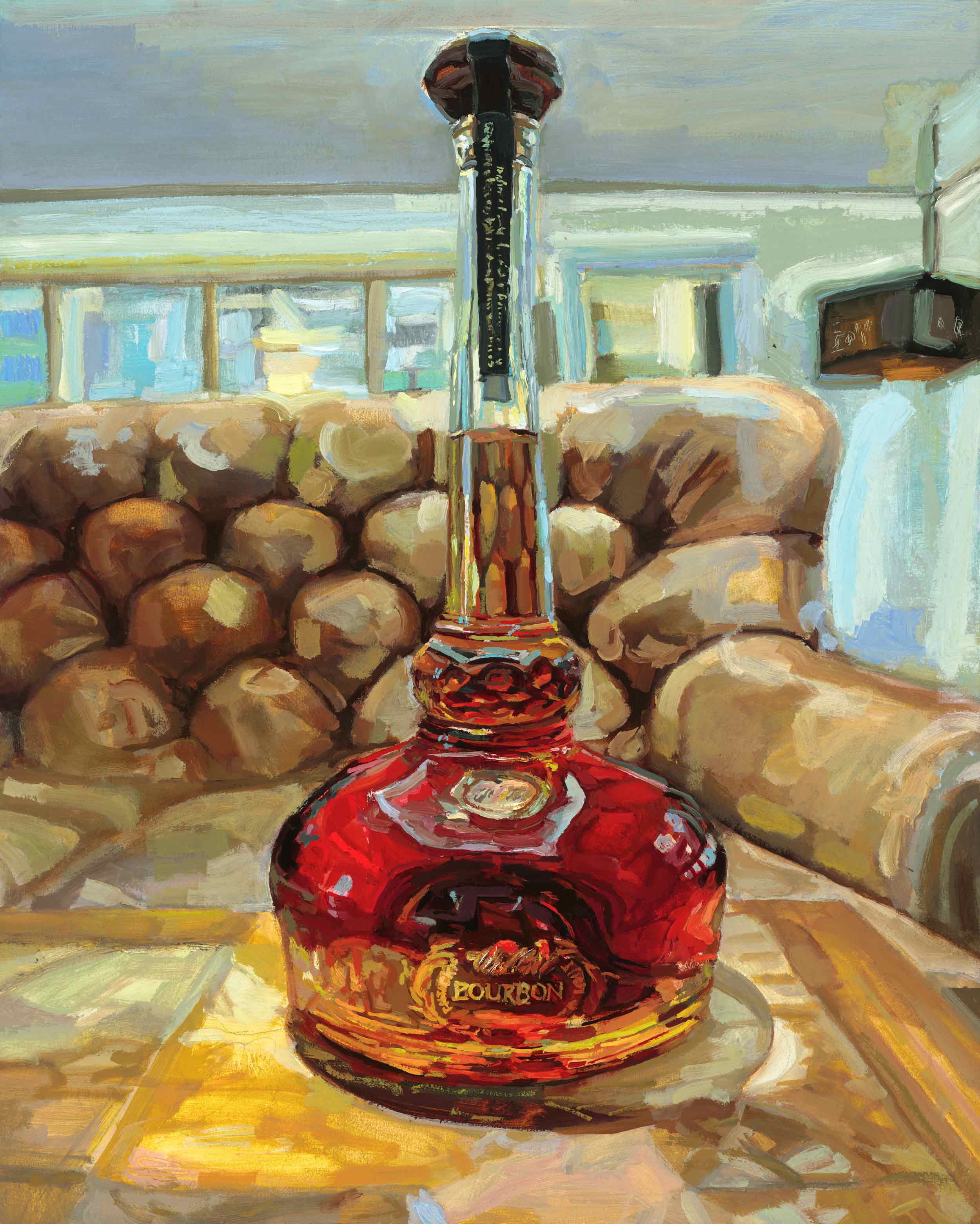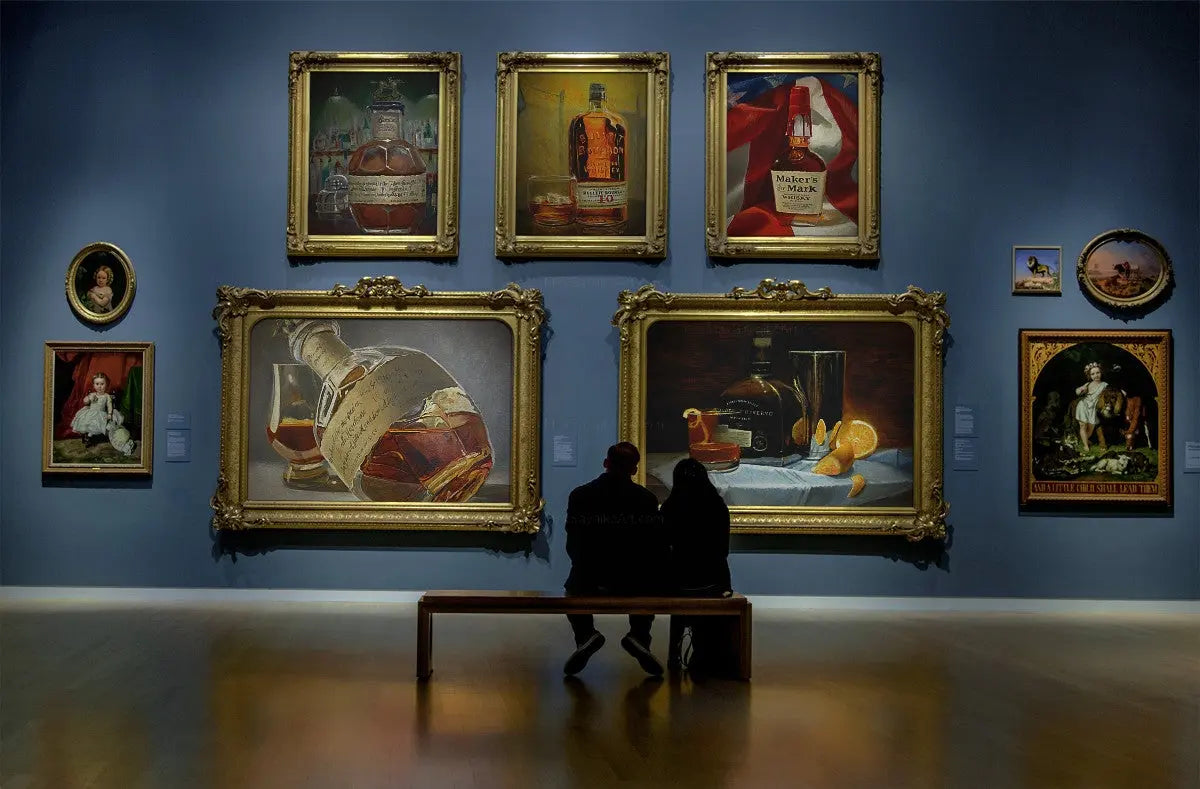Limited Edition: Discover Exclusive Bourbon Art Pieces for Collectors
Limited Edition: Discover Exclusive Bourbon Art Pieces for Collectors
Blog Article
The Significance of Whiskey Art in Celebrating Heritage and Workmanship in the Beverage Sector
The detailed connection between bourbon art and the celebration of heritage and craftsmanship within the drink market can not be overstated. Via thoughtfully developed containers and labels, bourbon brand names envelop their historical roots and the artisanal abilities that define their production approaches.
The Historic Roots of Whiskey
At the heart of scotch's attraction lies a rich tapestry of historic origins that trace back to ancient worlds. The beginnings of scotch can be linked to the purification techniques of the Sumerians and Babylonians around 2000 BCE, where very early types of fermented grain drinks began to emerge. Nevertheless, it remained in the Center Ages that the art of distillation progressed substantially, particularly in Ireland and Scotland, bring about the development of whiskey as we understand it today.
The term "whiskey" itself derives from the Gaelic word "uisce beatha," suggesting "water of life." This phrase emphasizes the cultural relevance of bourbon in Celtic societies, where it was typically connected with rituals, events, and public bonding. By the 15th century, purification became an acknowledged craft within reclusive areas, leading the way for the establishment of lawful distilleries.
As profession courses expanded, whiskey's popularity expanded, going beyond local borders and recording the interest of connoisseurs worldwide. Limited Edition. This historic trip mirrors not just the workmanship behind bourbon production but also its essential function in social and social contexts, noting it as a considerable drink throughout background
Artistic Expression in Branding
Scotch branding stands as an engaging crossway of creativity and business, where visual identity plays a vital duty fit customer understanding. The appearances of bourbon tags, product packaging, and advertising and marketing products show not only the brand's story yet additionally its core worths and heritage. With creative expression, distilleries communicate a narrative that resonates with customers, stimulating emotions and sparking connections.
Making use of shade, typography, and imagery in branding serves to set apart items in a saturated market. For example, traditional motifs may evoke a feeling of authenticity and craftsmanship, while modern designs can indicate development and forward-thinking. This critical imaginative direction enhances brand name acknowledgment and loyalty, permitting consumers to build a personal partnership with the whiskey they pick.
Moreover, artistic expression in branding typically functions as a celebration of local heritage. Distilleries often integrate regional signs or historical recommendations into their designs, creating a feeling of location that welcomes customers to participate in a more comprehensive cultural experience. Inevitably, the artistry behind bourbon branding not only improves aesthetic appeal but also enriches the general story of the brand, promoting a much deeper admiration for the workmanship and heritage ingrained in each bottle.
Craftsmanship in Bottle Layout
The virtuosity apparent in scotch branding expands past visual identity to encompass the craftsmanship entailed in bottle style. Each container serves as a vessel not simply for the spirit within, yet also for the story it informs regarding its tradition, top quality, and origin. The design procedure calls for meticulous interest to detail, as aspects such as closure, material, and form contribute considerably to the overall perception of the scotch.
Craftsmanship in container design involves picking top notch glass that can improve the bourbon's color and clarity, while additionally giving a tactile experience for the consumer. The shape of the container need to be both visually enticing and functional, often reflecting the heritage of the brand. Many distilleries go with unique shapes or embossed logos that stimulate a feeling important site of credibility and history.
Moreover, the label style and typography play an essential function in communicating the brand name's story. Realism Art. A well-crafted container not just mesmerizes the customer's eye however additionally reinforces the brand's dedication to high quality and practice. This way, the craftsmanship of bottle layout ends up being an essential facet of the scotch experience, combining virtuosity with an extensive respect for heritage
Social Relevance of Scotch Art
Celebrating tradition and workmanship, the cultural value of bourbon art goes beyond simple visual appeals, intertwining with the historic and social stories of the areas from which it originates. Each bottle functions as a canvas, illustrating the distinct stories, folklore, and customs that have formed regional whiskey-making practices. The intricate styles typically reflect the heritage of the distillers, incorporating signs helpful site and themes that reverberate with the culture and values of their areas.

Furthermore, bourbon art plays an essential role in communal events and celebrations, functioning as a tangible web link between individuals and their shared experiences. By appreciating the creativity in bourbon packaging, customers cultivate a much deeper understanding and respect for the craft, eventually enriching their pleasure of my blog the drink itself.
Modern Trends in Whiskey Discussion
Recently, the presentation of bourbon has progressed to reflect contemporary preferences and fads while still honoring standard craftsmanship - Limited Edition. Distilleries are significantly concentrating on aesthetic components that enhance the general alcohol consumption experience, linking the gap between heritage and modernity
Cutting-edge container designs have arised, often integrating lasting products and imaginative labels that tell compelling tales. Several brand names now collaborate with regional musicians, instilling their items with unique visual expressions that resonate with consumers. Furthermore, limited-edition launches are usually packaged in collectible containers, adding value and allure for lovers.

Conclusion
In verdict, bourbon art offers as an essential channel for sharing the heritage and craftsmanship fundamental in the beverage industry. Through elaborate branding, innovative bottle designs, and culturally significant artistic components, bourbon brand names successfully recognize their customs and link with consumers.


Craftsmanship in container layout includes choosing premium glass that can improve the whiskey's shade and quality, while likewise offering a tactile experience for the customer. In this means, the craftsmanship of bottle layout comes to be a crucial aspect of the whiskey experience, combining creativity with a profound regard for heritage.
In final thought, whiskey art offers as a crucial channel for expressing the heritage and workmanship intrinsic in the beverage sector.
Report this page